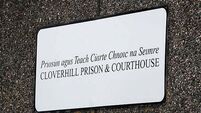Exhibition showcases Cork’s place in the Arts and Crafts movement

WHILE the Arts and Crafts movement began in England in 1887 as a reaction to industrialisation, it was adapted in this country with a bit of a nationalist twist.
This is one of the themes of the an exhibition at the Crawford Art Gallery entitled Made in Cork: The Arts and Crafts Movement 1880s-1920s.











